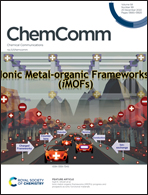Sticktight-inspired PEGylation for low-fouling coatings†
Abstract
Polyethylene glycol (PEG) has been widely used for modifying surfaces to reduce non-specific interactions with biomolecules, microorganisms, and cells. Herein, we report a sticktight-inspired PEGylation strategy to fabricate low-fouling coatings. The influence of PEG molecular architectures on the PEG density and biological adhesion were studied. Notably, an increase in the number of arms resulted in improved surface PEGylation and an improved antifouling ability against the adhesion of proteins, mammalian cells and bacteria. The molecular architecture-dependent PEGylation strategy is an attractive approach for developing advanced low-fouling coatings.



 Please wait while we load your content...
Please wait while we load your content...